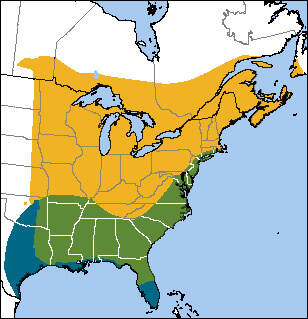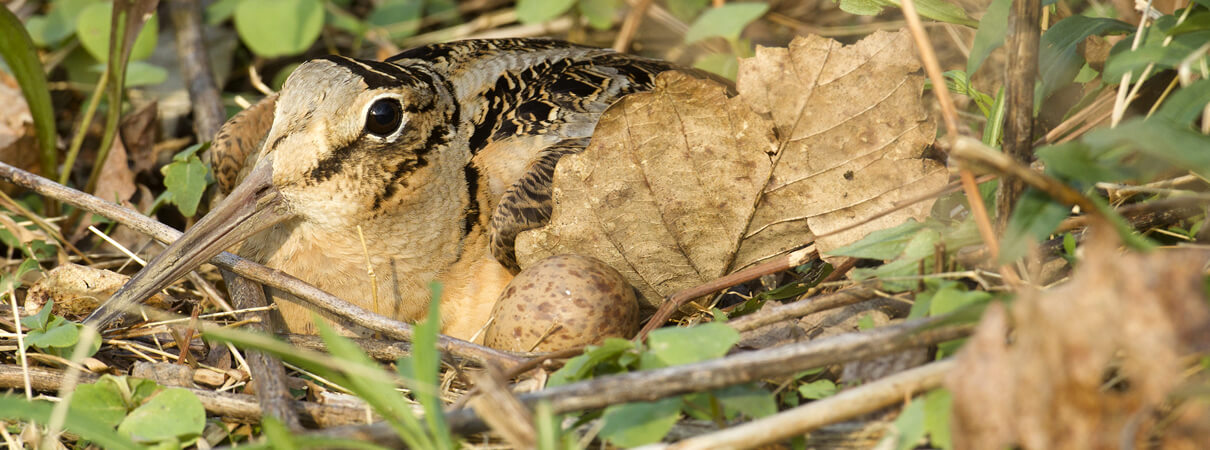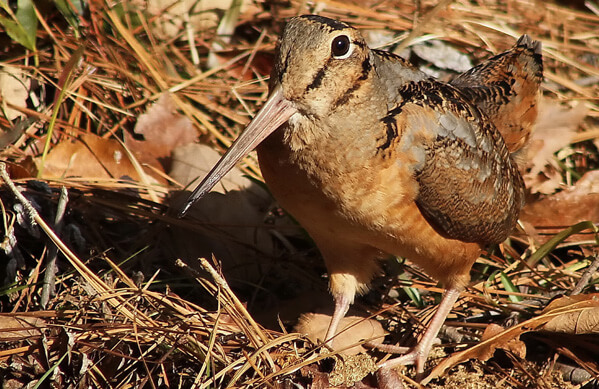 One of the American Woodcock's more colorful folk names is “timberdoodle,” probably for the bird's forest-edge haunts, erratic flight, and twittering call notes. These plump little birds are technically shorebirds like the Red Knot and Dunlin, though they're found far from any beach.
One of the American Woodcock's more colorful folk names is “timberdoodle,” probably for the bird's forest-edge haunts, erratic flight, and twittering call notes. These plump little birds are technically shorebirds like the Red Knot and Dunlin, though they're found far from any beach.
Since American Woodcocks are nocturnal migrants, they are frequent victims of collisions with communications towers, glass windows, and other man-made structures. A heavy diet of earthworms, which makes up more than half its diet, makes the woodcock vulnerable to poisoning by accumulated pesticides and heavy metals, which are picked up by the worms as they digest soil matter.
Rarely seen, this species spends most of its time hidden in fields and forests, where it probes for earthworms with a flexible-tipped bill that can reach worms more than two inches underground. Its large eyes are positioned high and near the back of the skull, an adaptation that enables the bird to watch for danger while probing for food.
See a woodcock hen's camouflage as she sits on her nest.
Sign up for ABC's eNews to learn how you can help protect birds
The Woodcock's Sky Dance
On late winter and early spring evenings, male woodcocks perform conspicuous displays, dubbed “sky dances” by naturalist Aldo Leopold. A male begins by giving a buzzy, nasal peent call, turning in a tight circle while calling to broadcast to all nearby females.

American Woodcock on nest by Joe McDonald, Shutterstock
Then he suddenly launches into the air, circling higher and higher until almost invisible, wings making a distinctive chittering sound all the while. At the apex of his display flight (200–350 feet), the male woodcock switches to a series of high-pitched chirps, then tumbles back to earth in a steep dive, where he begins his display anew.
American Woodcock and the Warbler
American Woodcock share their second-growth habitat with the Golden-winged Warbler and benefit from conservation measures designed for that bird. In Minnesota, with funding from the Outdoor Heritage Fund, ABC has improved more than 2,500 acres of habitat for American Woodcocks and Golden-winged Warblers. See how other actions underway now benefit both birds.
Donate to support ABC's conservation mission!



















































